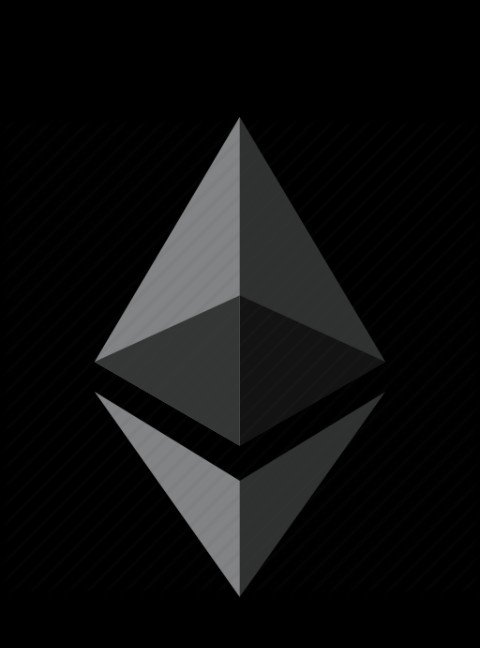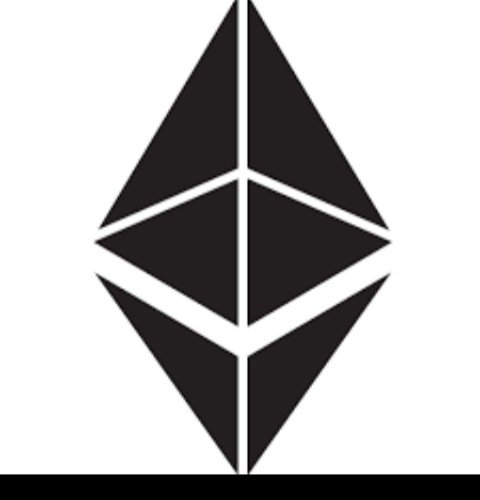Crypto Academy | Week 4 Homework Post | by professor. @gbenga
Greetings Steemians.
It's another wonderful week in the crypto Academy. I hope all is well with you. In this post I will be submitting my homework by professor @gbenga.

Task.
Explain in full a project built on the Ethereum Blockchain.
Before I proceed
- What is Ethereum?
Ethereum
Ethereum is a decentralized, open-sourceblockchain featuring smart contractfunctionality. Ether (ETH) is the native cryptocurrency of the platform. It is the second-largest cryptocurrency by market capitalization, after Bitcoin. Ethereum is the most actively used blockchain.
- Ethereum .

Source
Ethereum Logo original authors Vitalik Buterin, Gavin WoodDeveloper Ethereum Foundation, Hyperledger, Nethermind, OpenEthereum, EthereumJSInitial release30 July 2015; 6 years ago.
Ethereum was proposed in 2013 by programmer Vitalik Buterin. Development was crowdfunded in 2014, and the network went live on 30 July2015, with 72 million coins premined. The Ethereum Virtual Machine (EVM) is Turing-complete, can execute scripts and run decentralized applications. Ethereum is used for decentralized finance, and has been utilized for many initial coin offerings.
In 2016, a hacker exploited a flaw in a third-party project called The DAO and stole $50 million of Ether. As a result, the Ethereum community voted to hard fork the blockchain to reverse the theft and Ethereum Classic (ETC) continued as the original chain.
Ethereum has started implementing a series of upgrades called Ethereum 2.0, which includes a transition to proof of stake and an increase in transaction throughput using sharding.
Hstory
Ethereum founder Vitalik Buterin in 2015
Ethereum was initially described in a white paper by Vitalik Buterin, a programmer and co-founder of Bitcoin Magazine, in late 2013 with a goal of building decentralized applications. Buterin argued that Bitcoin and blockchaintechnology could benefit from other applications besides money and needed a scripting languagefor application development that could lead to attaching real-world assets, such as stocks and property, to the blockchain. In 2013, Buterin briefly worked with eToro CEO Yoni Assia on the Colored Coins project and drafted its white paper outlining additional use cases for blockchain technology. However, after failing to gain agreement on how the project should proceed, he proposed the development of a new platform with a more general scripting language that would eventually become Ethereum.
Ethereum was announced at the North American Bitcoin Conference in Miami, in January 2014.
Ethereum has an unusually long list of founders. Anthony Di Iorio wrote: "Ethereum was founded by Vitalik Buterin, Charles Hoskinson, Mihai Alisie & Amir Chetrit in December 2013. Joseph Lubin, Gavin Wood, & Jeffrey Wilcke were added in early 2014 as founders." Formal development of the software began in early 2014 through a Swiss company.
- Etymology
Buterin chose the name Ethereum after browsing a list of elements from science fiction on Wikipedia. He stated, "I immediately realized that I liked it better than all of the other alternatives that I had seen; I suppose it was the fact that sounded nice and it had the word 'ether', referring to the hypothetical invisible medium that permeates the universe and allows light to travel."Buterin wanted his platform to be the underlying and imperceptible medium for the applications running on top of it.
Since the initial launch, Ethereum has undergone several planned protocol upgrades, which are important changes affecting the underlying functionality and incentive structures of the platform. Protocol upgrades are accomplished by means of a hard fork. The latest upgrade to Ethereum was "Muir Glacier", implemented on 1 January 2020. - The DAO event
In 2016, a decentralized autonomous organization called The DAO, a set of smart contracts developed on the platform, raised a record US$150 million in a crowdsale to fund the project. The DAO was exploited in June 2016 when US$50 million of DAO tokens were stolen by an unknown hacker. The event sparked a debate in the crypto-community about whether Ethereum should perform a contentious "hard fork" to reappropriate the affected funds. It resulted in the network splitting into two blockchains: Ethereum with the theft reversed and Ethereum Classic which continued on the original chain. - Development.
Open-source development is currently underway for a major upgrade to Ethereum known as Ethereum 2.0 or Eth2. The main purpose of the upgrade is to increase transaction throughput for the network from the current of about 15 transactions per second to up to tens of thousands of transactions per second.
The plan is to increase throughput by splitting up the workload into many blockchains running in parallel (referred to as sharding) and then having them all share a common consensus proof of stake blockchain, so that to maliciously tamper with one chain would require that one tamper with the common consensus, which would cost the attacker far more money than they could ever gain from the attack.
Ethereum 2.0 (also known as Serenity) is designed to be launched in three phases: - "Phase 0" was launched on 1 December 2020 and created the Beacon Chain, a proof of stake (PoS) blockchain that will act as the central coordination and consensus hub of Ethereum 2.0.
- "Phase 1" will create shard chains and connect them to the Beacon Chain.
- "pase 2" will implement state execution in the shard chains[12] with the current Ethereum 1.0 chain expected to become one of the shards of Ethereum 2.0.
- Design
Ethereum is a permissionless, non-hierarchical network of computers (nodes) which build and come to consensus on an ever-growing series of "blocks", or batches of transactions, known as the blockchain. Each block contains an identifier of the block that it must immediately follow in the chain if it is to be considered valid. Whenever a node adds a block to its chain, it executes the transactions therein in their order, thereby altering the ETH balances and other storage values of Ethereum accounts. These balances and values, collectively known as the state, are maintained on the node's computer separately from the blockchain, in a Merkle Patricia tree.
Each node communicates with a relatively small subset of the network, known as its peers. Whenever a node wishes to include a new transaction in the blockchain, it sends it to its peers, who then send it to their peers, and so on. In this way, it propagates throughout the network. Certain nodes, called miners, maintain a list of all of these new transactions and use them to create new blocks, which they then send to the rest of the network. Whenever a node receives a block, it checks the validity of the block and of all of the transactions therein and, if valid, adds it to its blockchain and executes all of said transactions. As the network is non-hierarchical, a node may receive competing blocks, which may form competing chains. The network comes to consensus on the blockchain by following the "longest chain rule", which states that the chain with the most blocks at any given time is the canonical chain. This rule achieves consensus because miners do not want to expend their computational work trying to add blocks to a chain that will be abandoned by the network. - Ether.
Ether (ETH) is the cryptocurrency generated by the Ethereum protocol as a reward to miners in a proof of work system for adding blocks to the blockchain. It is the only currency accepted in the payment of transaction fees, which also go to miners. The terms "Ether" and "Ethereum" have become interchangeable in the cryptocurrency community. The block reward together with the transaction fees provide the incentive to miners to keep the blockchain growing (ie. to keep processing new transactions). Therefore, Ether is fundamental to the operation of the network. Each Ethereum account has an ETH balance and may send ETH to any other account. The smallest unit of ETH is known as a Wei and is equal to 10-18 ETH. [42]
Ether is listed on exchanges under the ticker symbol ETH. The Greek uppercase Xi character (Ξ) is sometimes used for its currency symbol.
The shift to Ethereum 2.0 may reduce the issuance rate of Ether. There is currently no implemented hard cap on the total supply of Ether. - Accounts.
There are two types of accounts on Ethereum: user accounts (also known as externally-owned accounts) and contracts. Both types have an ETH balance, may send ETH to any account, may call any public function of a contract or create a new contract, and are identified on the blockchain and in the state by their address.
User accounts are the only type which may create transactions. For a transaction to be valid, it must be signed using the account's private key, a 64-character hexadecimal string that should only be known to the account's owner.
- Addresses
Ethereum addresses are composed of the prefix "0x", a common identifier for hexadecimal, concatenated with the rightmost 20 bytes of the Keccak-256 hash of the ECDSA public key (the curve used is the so-called secp256k1). In hexadecimal, 2 digits represent a byte, meaning addresses contain 40 hexadecimal digits, e.g. 0xb794f5ea0ba39494ce839613fffba74279579268. Contract addresses are in the same format, however, they are determined by sender and creation transaction nonce. - Virtual machine
The Ethereum Virtual Machine (EVM) is the runtime environment for smart contracts in Ethereum. It is a 256-bit register stack designed to run the same code exactly as intended. It is the fundamental consensus mechanism for Ethereum. The formal definition of the EVM is specified in the Ethereum Yellow Paper. EVMs have been implemented in C++, C#, Go, Haskell, Java, JavaScript, Python, Ruby, Rust, Elixir, Erlang, and soon WebAssembly. - Gas
Gas is a unit of account within the EVM used in the calculation of a transaction fee, which is the amount of ETH a transaction's sender must pay to the miner who includes the transaction in the blockchain.
CC:
@booming01
@booming04
@steemcurator02
@steemcurator03
@josepha